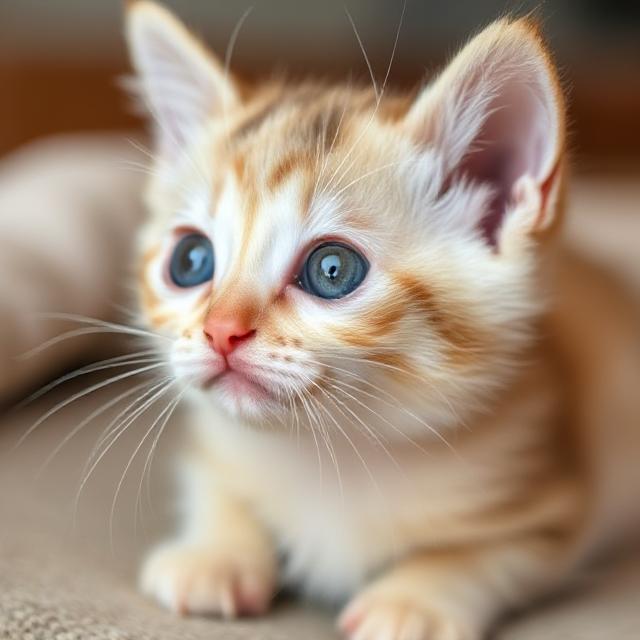Kitten Eye Infections: Causes, Symptoms, and Solutions
Kitten eye infections are a common concern for new pet owners. Those adorable, bright eyes can quickly become clouded with discharge, redness, and discomfort. Understanding the causes, recognizing the symptoms, and knowing the appropriate solutions are crucial for ensuring your little feline friend recovers quickly and avoids lasting damage. This article will guide you through everything you need to know about kitten eye infections.
Understanding the Culprits: What Causes Eye Infections in Kittens?
Several factors can contribute to eye infections in these vulnerable young animals. Because their immune systems are still developing, kittens are more susceptible to infectious agents than adult cats. Here are some of the most common culprits:
- Viruses: Feline herpesvirus (FHV-1) and feline calicivirus (FCV) are frequent causes of upper respiratory infections in kittens, and these viruses often manifest as eye infections as well.
- Bacteria: Chlamydia, Mycoplasma, and other bacterial species can also infect the conjunctiva (the membrane lining the eyelid and covering the white of the eye) and cause inflammation and discharge.
- Parasites: While less common, certain parasites can also lead to eye irritation and infection.
- Environmental Irritants: Dust, pollen, smoke, and other irritants can inflame the eyes and make them more susceptible to infection.
- Injuries: Scratches or other injuries to the eye can create an entry point for bacteria and viruses, leading to infection.
- Congenital Issues: In some rare cases, kittens may be born with structural problems in their eyelids or tear ducts that predispose them to chronic eye infections.
Crowded environments, like shelters or multi-cat households, can also increase the risk of infection spreading rapidly among kittens.
Spotting the Signs: Recognizing the Symptoms
Early detection is key to successful treatment. Keep a close eye on your kitten and be alert for the following signs of an eye infection:
- Discharge: This is often the most obvious symptom. The discharge can be clear, watery, white, yellow, or green, and may be thick or crusty.
- Redness: The conjunctiva may appear red and inflamed.
- Swelling: The eyelids may be swollen and puffy.
- Squinting: Your kitten may squint or keep one or both eyes partially closed, indicating pain or discomfort.
- Excessive Tearing: Increased tear production can be a sign of irritation or infection.
- Rubbing or Pawing at the Eyes: Your kitten may try to relieve the itching or discomfort by rubbing their eyes with their paws.
- Sensitivity to Light: Also known as photophobia, this can make your kitten avoid bright light.
- Cloudiness of the Cornea: In severe cases, the cornea (the clear outer layer of the eye) may become cloudy.
- Upper Respiratory Symptoms: Because eye infections are often linked to feline upper respiratory infections (URIs), also watch for sneezing, nasal discharge, and coughing.
If you notice any of these symptoms, it’s important to seek veterinary attention promptly. Delaying treatment can lead to more serious complications, such as corneal ulcers, scarring, and even vision loss.
Finding the Right Solution: Treatment Options for Kitten Eye Infections
Treatment for kitten eye infections depends on the underlying cause. Your veterinarian will perform a thorough examination and may take samples of the discharge for testing to identify the specific pathogen involved. Based on the diagnosis, they will recommend the most appropriate treatment plan, which may include one or more of the following:
- Antibiotic Eye Drops or Ointments: These are commonly prescribed for bacterial infections. It’s important to administer the medication exactly as directed by your veterinarian.
- Antiviral Medications: If the infection is caused by a virus, such as FHV-1, antiviral eye drops or oral medications may be prescribed.
- Pain Relief: Your veterinarian may prescribe pain medication to help alleviate discomfort.
- Warm Compresses: Applying warm, moist compresses to the affected eye(s) can help to soothe the inflammation and loosen crusty discharge.
- L-Lysine Supplementation: L-lysine is an amino acid that can help to boost the immune system and reduce the severity of viral infections.
It’s crucial to follow your veterinarian’s instructions carefully and to complete the entire course of treatment, even if your kitten seems to be getting better. Stopping treatment prematurely can lead to a recurrence of the infection or the development of antibiotic resistance.
Prevention is Key: Reducing the Risk of Infection
While it’s not always possible to prevent kitten eye infections, here are some steps you can take to reduce your kitten’s risk:
- Vaccination: Vaccinate your kitten against feline herpesvirus, feline calicivirus, and feline panleukopenia. These vaccines can help to protect against common viral causes of eye infections.
- Good Hygiene: Wash your hands thoroughly before and after handling your kitten, especially if you have other cats in the household. Regularly clean your kitten’s food and water bowls and litter box.
- Reduce Stress: Stress can weaken the immune system and make kittens more susceptible to infection. Provide your kitten with a comfortable, safe, and enriching environment.
- Avoid Overcrowding: Limit the number of cats in your household and ensure that they have plenty of space to roam and play.
- Prompt Veterinary Care: If you notice any signs of illness, take your kitten to the veterinarian promptly for diagnosis and treatment.
By understanding the causes, symptoms, and solutions for kitten eye infections, you can play a proactive role in protecting your feline companion’s health and ensuring a happy and comfortable life. Remember to consult with your veterinarian for any health concerns, and always follow their advice for treatment and prevention.

